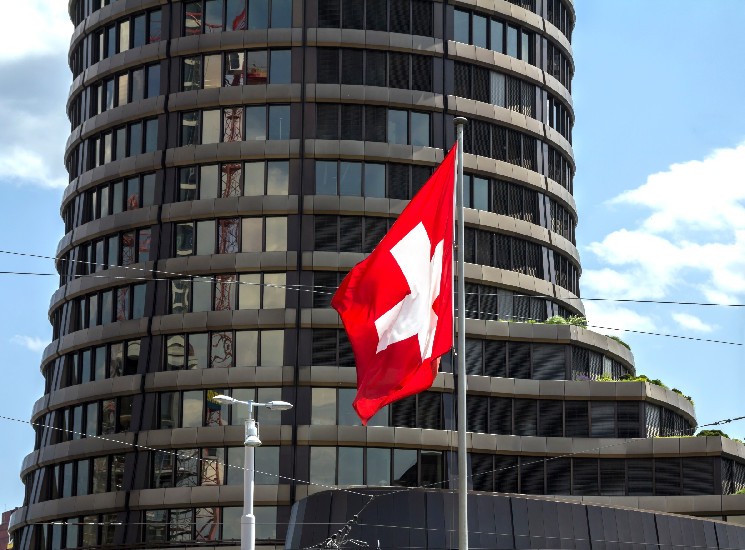Banks Worldwide Might Soon Have to Back Bitcoin With Traditional Capital

According to a report from Friday, banks all across the world might soon be subjected to a new set of rules regarding digital assets. The proposed regulation would divide cryptocurrencies into “group 1”—which will include assets like fiat-based stablecoins, and “group 2”—which would contain currencies like Bitcoin.
Banks May Soon Have to Comply With a New Set of Rules for Cryptocurrencies
Reportedly, a Switzerland-based global forum for crafting industry rules called the Basel Committee on Banking Supervision is considering a new set of rules intended for banks dealing with cryptocurrencies. The proposed rules would divide all digital assets into two groups. Generally speaking, banks dealing with cryptocurrencies belonging to “group 1”—mostly currencies backed by other assets like fiat-backed stablecoins—wouldn’t be affected by the new regulations.
The so-called “group 2” would include cryptocurrencies not backed by any assets of tangible value. A prime example of an asset that would fall into this category is the world’s largest cryptocurrency—Bitcoin. If the Committee reaches an agreement on these rules, any bank wishing to deal with “group 2” would have to take extra precautions due to their higher volatility.
One of the precautions is that the bank would have to hold traditional capital equal in value to the “group 2” cryptocurrency—$1 million worth of Bitcoin would mean that a bank has to raise $1 million in extra capital. The Basel Committee has been actively discussing cryptocurrencies. since 2019. In October 2022 it published a report that found that banks worldwide hold around $9 billion in digital assets.
Crypto Regulation in the Wake of LUNA and FTX
While various regulators have been actively pursuing digital asset regulation for years, the dramatic events of 2022 did much to raise the pressure. In May, LUNA collapsed as UST lost its peg sending shockwaves through the industry and leading to multiple bankruptcies. Together with the billions lost by both retail and institutional investors, perhaps the biggest consequence of the crash is a bill that could prevent the issuing of any algorithmic stablecoins for a period of two years.
More recently, Sam Bankman-Fried’s FTX, the world’s second-largest crypto exchange, filed for bankruptcy after halting withdrawals due to a severe “liquidity crunch”. The chaos surrounding the collapse only grew larger after it was revealed that FTX went against its own terms of service by loaning huge sums of users’ assets to Alameda research creating a $10 billion hole in its books.
While the ongoing “crypto winter” slowed adoption, the industry became large enough for the White House to issue its first-ever framework on digital asset regulation in September. On December 8th, the SEC published new reporting guidelines for companies dealing with cryptocurrencies in response to the recent catastrophes within the sector.
Despite the turmoil, institutions have also been showing increased levels of interest in digital assets. J.P Morgan made a filing with the U.S. Patent and Trademark Office seeking to register its own crypto wallet despite its CEO repeatedly belittling cryptocurrencies and recently likening them to “pet rocks”.






 Bitcoin
Bitcoin  Ethereum
Ethereum  Tether
Tether  USDC
USDC  TRON
TRON  Dogecoin
Dogecoin  Cardano
Cardano  Bitcoin Cash
Bitcoin Cash  LEO Token
LEO Token  Chainlink
Chainlink  Zcash
Zcash  Monero
Monero  Stellar
Stellar  Litecoin
Litecoin  Hedera
Hedera  Dai
Dai  Cronos
Cronos  OKB
OKB  Tether Gold
Tether Gold  Ethereum Classic
Ethereum Classic  KuCoin
KuCoin  Gate
Gate  Algorand
Algorand  Cosmos Hub
Cosmos Hub  VeChain
VeChain  Tezos
Tezos  Dash
Dash  TrueUSD
TrueUSD  Stacks
Stacks  IOTA
IOTA  Basic Attention
Basic Attention  Decred
Decred  Theta Network
Theta Network  NEO
NEO  Synthetix
Synthetix  Qtum
Qtum  0x Protocol
0x Protocol  Ravencoin
Ravencoin  DigiByte
DigiByte  Nano
Nano  Zilliqa
Zilliqa  Holo
Holo  Siacoin
Siacoin  Numeraire
Numeraire  Waves
Waves  Ontology
Ontology  BUSD
BUSD  Enjin Coin
Enjin Coin  Status
Status  Hive
Hive  Pax Dollar
Pax Dollar  Lisk
Lisk  Steem
Steem  Huobi
Huobi  OMG Network
OMG Network  NEM
NEM  Bitcoin Gold
Bitcoin Gold  Augur
Augur  HUSD
HUSD  Bitcoin Diamond
Bitcoin Diamond